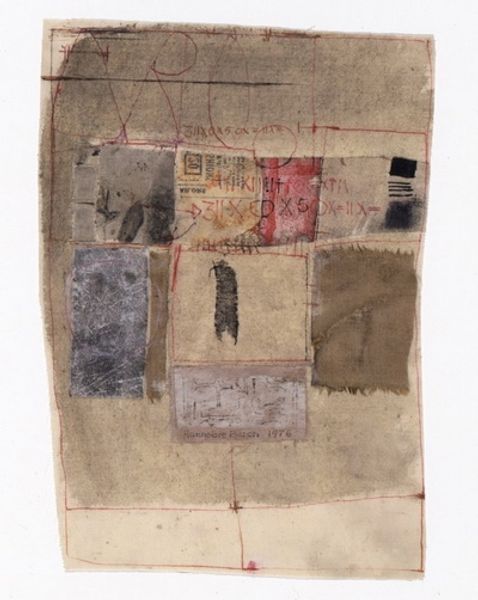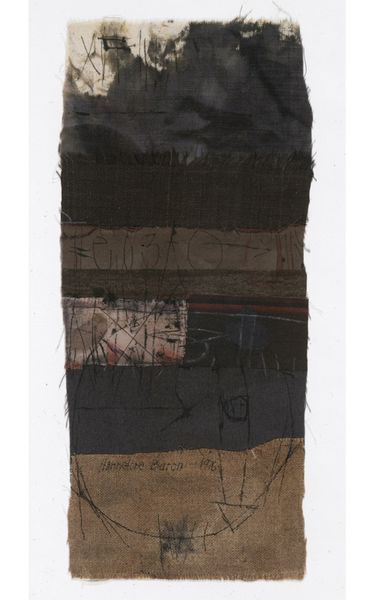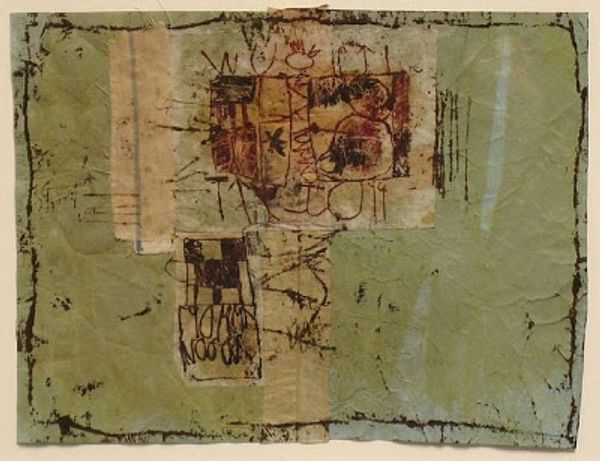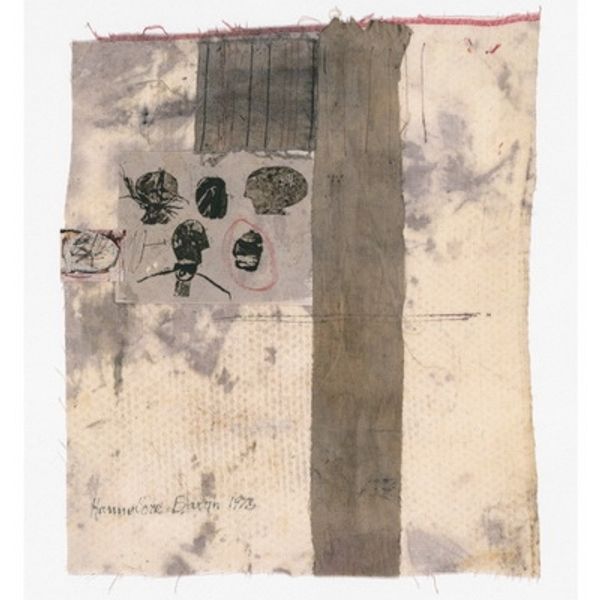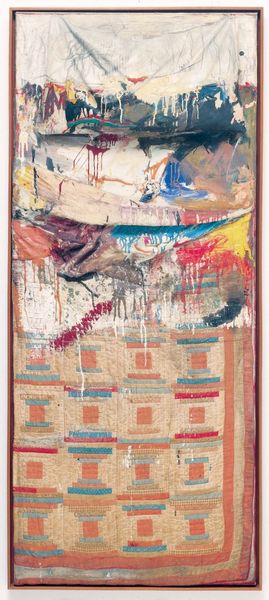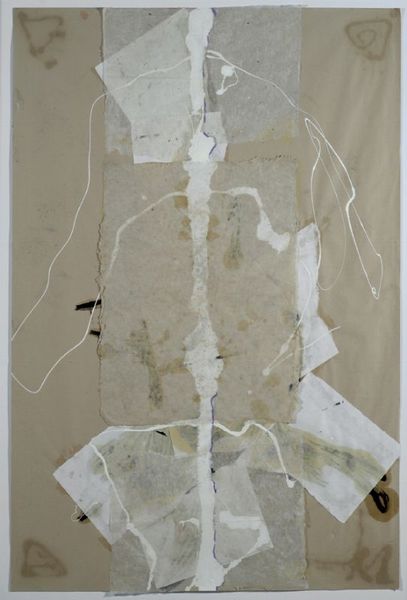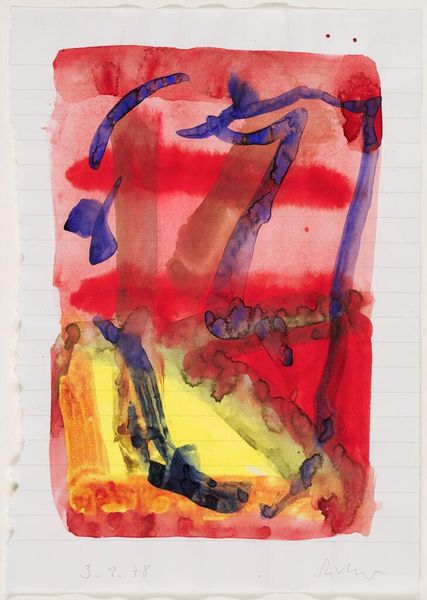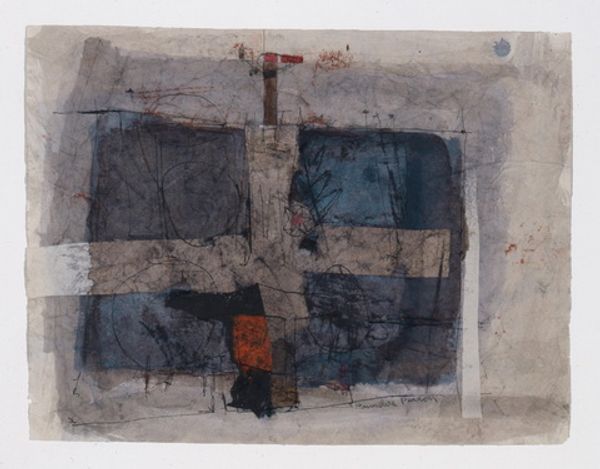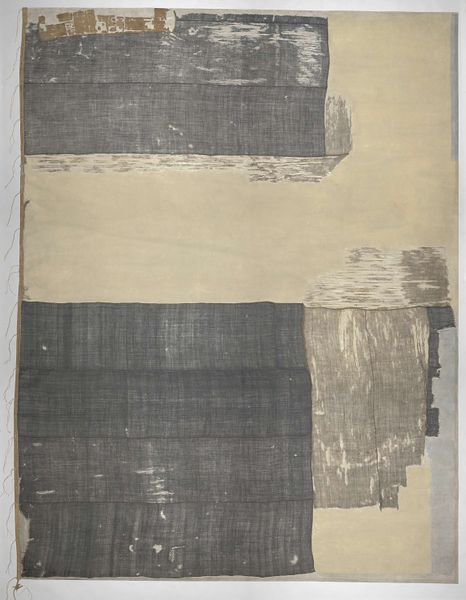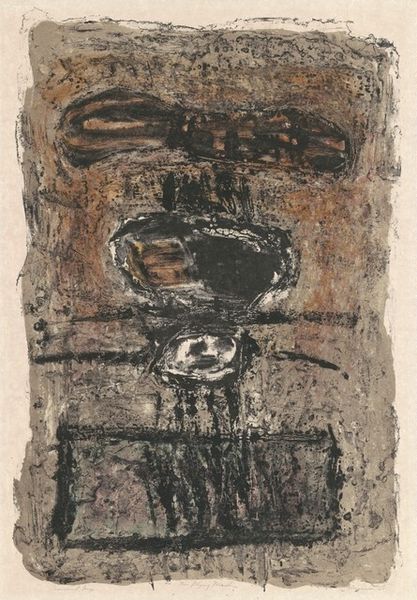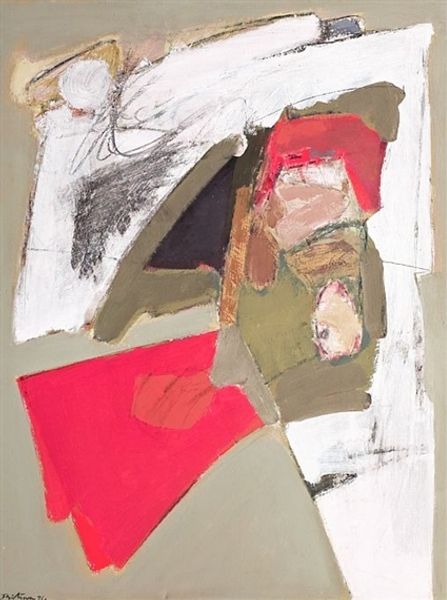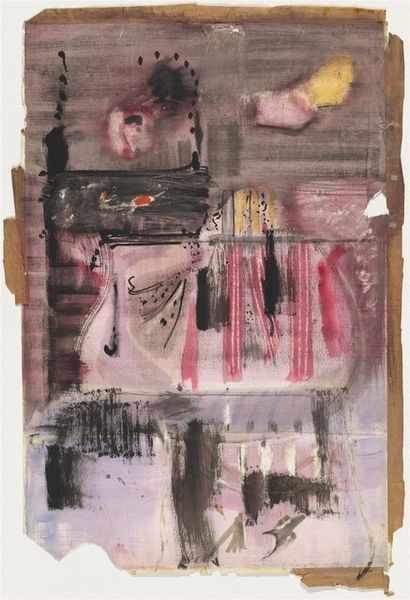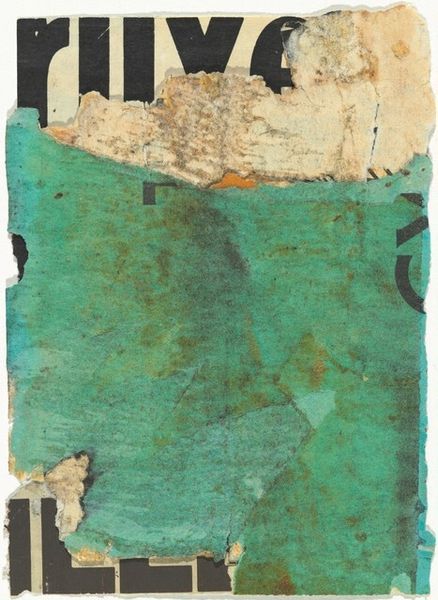
mixed-media, collage, textile
#
mixed-media
#
organic
#
collage
#
textile
#
geometric
#
abstraction
#
mixed media
#
modernism
Copyright: Hannelore Baron,Fair Use
Curator: This intriguing piece is titled “Collage,” a mixed-media artwork created in 1976 by Hannelore Baron. It incorporates collage, textile, and other mixed media elements. Editor: It has an unsettling intimacy, doesn’t it? A fragmented textile field of soft mauves interrupted by jarring notes of mustard yellow and almost menacing scribbles. Curator: Baron’s work is often seen as a reflection of her personal history, particularly the trauma of her family's flight from Nazi Germany when she was a child. Her collages explore themes of displacement, memory, and identity within the broader scope of the postwar modernist art movement. The rough edges and found materials certainly echo those anxieties. Editor: Absolutely. Look at the distressed nature of the fabrics, the visible seams, and haphazard construction. It emphasizes process. We see the literal act of piecing things together, hinting at a larger dialogue of reconstruction. How do we rebuild ourselves and our histories? How do we literally manufacture meaning in this social context? Curator: And there’s an intersectional feminist thread here, too. She utilizes the traditionally gendered associations of textile work to subvert the male-dominated modernist art world, turning ‘craft’ into a medium for personal and political expression. Editor: It's about valuing materials and labor often dismissed by traditional notions of art. The handwork here creates a very unique kind of materiality that speaks volumes on the social position of these materials. Even these fragmented texts scrawled across the cloth serve a particular material presence as textual objects themselves. Curator: In many ways, she’s prefiguring later conversations around trauma, memory, and identity in contemporary art. It reminds us of how lived experiences shape artistic expression and challenges conventional histories that have previously excluded those voices. Editor: Indeed. By bringing forth the hidden aspects of labor and materiality, Baron creates a tactile and cerebral landscape of social narratives and historical memory. Curator: I appreciate how viewing this artwork in the present resonates differently through new frameworks of political analysis and intersectionality. Editor: And by carefully observing its construction, materials, and context, we might gain an entirely unique vantage point that sheds new light on its historical era, while contributing new possibilities of artistic production in our present moment.
Comments
No comments
Be the first to comment and join the conversation on the ultimate creative platform.
